- Clone
- 10.1 (See other available formats)
- Regulatory Status
- RUO
- Workshop
- VI MA36
- Other Names
- FcγRI, FcR I
- Isotype
- Mouse IgG1, κ
- Ave. Rating
- Submit a Review
- Product Citations
- publications
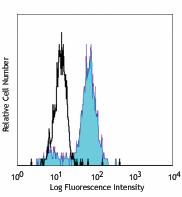
-

Human peripheral blood monocytes stained with 10.1 Pacific Blue™
| Cat # | Size | Price | Save |
|---|---|---|---|
| 305017 | 25 µg | ¥27,280 | |
| 305018 | 100 µg | ¥58,300 |
CD64 is a 72 kD single chain type I glycoprotein also known as FcγRI and FcR I. CD64 is a member of the immunoglobulin superfamily and is expressed on monocytes/macrophages, dendritic cells, and activated granulocytes. The expression can be upregulated by IFN-γ stimulation. CD64 binds IgG immune complex. It plays a role in antigen capture, phagocytosis of IgG/antigen complexes, and antibody-dependent cellular cytotoxicity (ADCC).
Product DetailsProduct Details
- Verified Reactivity
- Human, Cynomolgus, Rhesus
- Reported Reactivity
- Baboon, Capuchin Monkey, Chimpanzee, Squirrel Monkey
- Antibody Type
- Monoclonal
- Host Species
- Mouse
- Immunogen
- Human rheumatoid synovial fluid cells and fibronectin-purified monocytes.
- Formulation
- Phosphate-buffered solution, pH 7.2, containing 0.09% sodium azide.
- Preparation
- The antibody was purified by affinity chromatography, and conjugated with Pacific Blue™ under optimal conditions.
- Concentration
- 0.5 mg/ml
- Storage & Handling
- The antibody solution should be stored undiluted between 2°C and 8°C, and protected from prolonged exposure to light. Do not freeze.
- Application
-
FC - Quality tested
- Recommended Usage
-
Each lot of this antibody is quality control tested by immunofluorescent staining with flow cytometric analysis. For flow cytometric staining, the suggested use of this reagent is ≤ 2.0 µg per 106 cells in 100 µl volume or 100 µl of whole blood. It is recommended that the reagent be titrated for optimal performance for each application.
* Pacific Blue™ has a maximum emission of 455 nm when it is excited at 405 nm. Prior to using Pacific Blue™ conjugate for flow cytometric analysis, please verify your flow cytometer's capability of exciting and detecting the fluorochrome.
Alexa Fluor® and Pacific Blue™ are trademarks of Life Technologies Corporation.
View full statement regarding label licenses - Excitation Laser
-
Violet Laser (405 nm)
- Application Notes
-
Clone 10.1 recognizes the EC3 epitope of CD64. While both contain the EC3 domain, in-house testing suggests that clone 10.1 preferentially binds to CD64A (FcγRIA), but not CD64B (FcγRIB). Additional reported applications (for the relevant formats) include: blocking of human IgG3 and murine IgG2a binding to FcγRI2,5,6,11 and immunohistochemical staining of acetone-fixed frozen tissue sections12.
-
Application References
(PubMed link indicates BioLegend citation) -
- McMichael A, et al. Eds. 1987. Leucocyte Typing III. Oxford University Press. New York.
- Schlossman S, et al. Eds. 1995. Leucocyte Typing V. Oxford University Press. New York. p. 874.
- Kishimoto T, et al. Eds. 1997. Leucocyte Typing VI. Garland Publishing Inc. London.
- Holl V, et al. 2004. J. Immunol. 173:6274.
- Hober D, et al. 2002. J. Gen. Virol. 83:2169.
- Cho HJ, et al. 2007. Physiol Genomics 149:60.
- van Tits L, et al. 2005. Arterioscler Thromb Vasc Biol. 25:717. PubMed
- Bruhns P, et al. 2008. Blood 113:3716. PubMed
- Yoshino N, et al. 2000. Exp. Anim. (Tokyo) 49:97. (FC)
- Carter DL, et al. 1999. Cytometry 37:41. (FC)
- Dougherty GJ, et al. 1987. Eur. J. Immunol. 17:1453.
- Blom AB, et al. 2003. Arthritis Rheum. 48(4):1002-14. (IHC)
- Product Citations
-
- RRID
-
AB_2103460 (BioLegend Cat. No. 305017)
AB_2103459 (BioLegend Cat. No. 305018)
Antigen Details
- Structure
- Ig superfamily, type I glycoprotein, 72 kD
- Distribution
-
Monocytes, macrophages, dendritic cells, activated granulocytes
- Function
- Phagocytosis, ADCC
- Ligand/Receptor
- IgG receptor
- Cell Type
- Dendritic cells, Granulocytes, Macrophages, Monocytes
- Biology Area
- Immunology, Innate Immunity
- Molecular Family
- CD Molecules, Fc Receptors
- Antigen References
-
1. Hulett M, et al. 1994. Adv. Immunol. 57:1.
2. van de Winkel J, et al. 1993. Immunol. Today 14:215. - Gene ID
- 2209 View all products for this Gene ID
- UniProt
- View information about CD64 on UniProt.org
Related Pages & Pathways
Pages
Related FAQs
- Is our human Trustain FcX™ (cat# 422302) compatible with anti human CD16, CD32 and CD64 clones 3G8, FUN-2 and 10.1 respectively?
-
Yes
Other Formats
View All CD64 Reagents Request Custom ConjugationCustomers Also Purchased
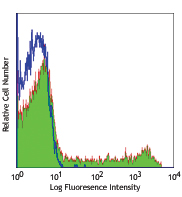
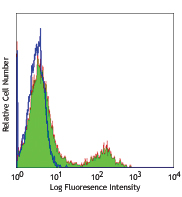
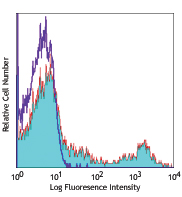

Compare Data Across All Formats
This data display is provided for general comparisons between formats.
Your actual data may vary due to variations in samples, target cells, instruments and their settings, staining conditions, and other factors.
If you need assistance with selecting the best format contact our expert technical support team.
-
Biotin anti-human CD64
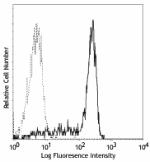
Human peripheral blood monocytes stained with 10.1 FITC -
FITC anti-human CD64

Human peripheral blood monocytes stained with 10.1 FITC -
PE anti-human CD64
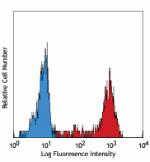
Human peripheral blood monocytes stained with 10.1 PE -
Purified anti-human CD64

Human peripheral blood monocytes were stained with CD64 (clo... -
Alexa Fluor® 488 anti-human CD64
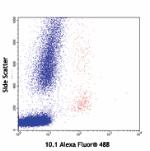
Human peripheral blood lymphocytes, monocytes, and granulocy... -
Alexa Fluor® 647 anti-human CD64

Human peripheral blood monocytes stained with10.1 Alexa Fluo... -
APC anti-human CD64
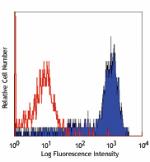
Human peripheral blood monocytes stained with 10.1 APC -
Pacific Blue™ anti-human CD64
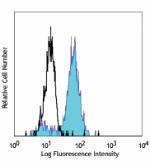
Human peripheral blood monocytes stained with 10.1 Pacific B... -
Brilliant Violet 421™ anti-human CD64
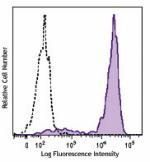
Human peripheral blood monocytes were stained with CD64 (clo... -
PE/Cyanine7 anti-human CD64
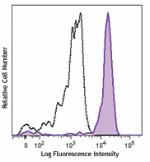
Human peripheral blood monocytes stained with anti-human CD6... -
PerCP/Cyanine5.5 anti-human CD64
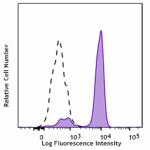
Human peripheral blood monocytes stained with CD64 (clone 10... -
APC/Cyanine7 anti-human CD64
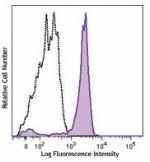
Human peripheral blood monocytes stained with anti-human CD6... -
Brilliant Violet 510™ anti-human CD64
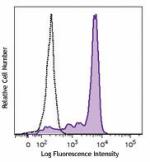
Human peripheral blood monocytes were stained with anti-huma... -
Purified anti-human CD64 (Maxpar® Ready)
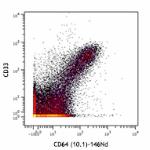
Human PBMCs stained with 158Gd-anti-CD33 (WM53) and 146Nd-an... -
PE/Dazzle™ 594 anti-human CD64
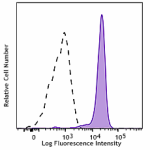
Human peripheral blood monocytes were stained with CD64 (clo... -
Brilliant Violet 605™ anti-human CD64
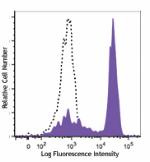
Human peripheral blood monocytes were stained with CD64 (clo... -
APC/Fire™ 750 anti-human CD64
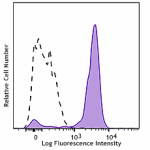
Human peripheral blood monocytes were stained with anti-huma... -
PE anti-human CD64

Typical results from human peripheral blood monocytes staine... -
PE/Dazzle™ 594 anti-human CD64

Typical results from human peripheral blood monocytes staine... -
FITC anti-human CD64

Typical results from human peripheral blood monocytes staine... -
TotalSeq™-A0162 anti-human CD64
-
Brilliant Violet 711™ anti-human CD64
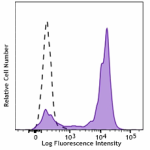
Human peripheral blood monocytes were stained with CD64 (clo... -
Alexa Fluor® 700 anti-human CD64
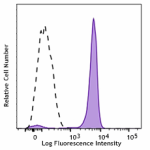
Human peripheral blood monocytes were stained with CD64 (Clo... -
Brilliant Violet 785™ anti-human CD64

Human peripheral blood monocytes were stained with CD64 (clo... -
TotalSeq™-C0162 anti-human CD64
-
Ultra-LEAF™ Purified anti-human CD64

Human peripheral blood monocytes were stained with CD64 (clo... -
TotalSeq™-B0162 anti-human CD64
-
TotalSeq™-D0162 anti-human CD64
-
GMP PE anti-human CD64
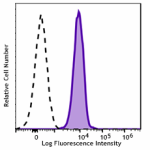
Typical results from human peripheral blood monocytes staine... -
GMP FITC anti-human CD64
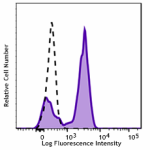
Typical results from human peripheral blood monocytes staine... -
Brilliant Violet 650™ anti-human CD64
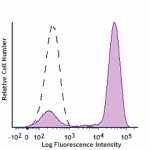
Human peripheral blood monocytes were stained with anti-huma... -
GMP PE/Dazzle™ 594 anti-human CD64

Typical results from human peripheral blood monocytes staine... -
PE/Cyanine7 anti-human CD64
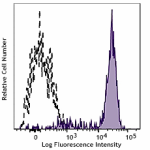
Typical result from human peripheral monocytes stained eithe... -
APC/Fire™ 750 anti-human CD64
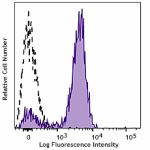
Typical results from human peripheral blood monocytes staine... -
PerCP/Cyanine5.5 anti-human CD64
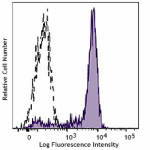
Typical result from human peripheral blood monocytes stained... -
Pacific Blue™ anti-human CD64

Typical result from human peripheral blood monocytes stained... -
GMP APC/Fire™ 750 anti-human CD64

Typical results from human peripheral blood monocytes staine... -
GMP PE/Cyanine7 anti-human CD64

Typical results from human peripheral blood monocytes staine...













Follow Us